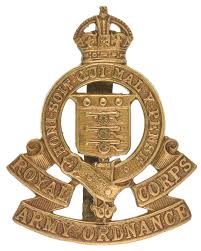Personal Details
Born: In 1875 in Whitchurch, Shropshire and baptised 26 December 1875 at St. Alkmund`s Parish Church.
Family: He was one of seventeen children (only 8 of whom survived) born to William Crewe, a painter and his wife Margaret. He married Mary Gilbert on 12 July 1905 at St. Chad`s Church, Prees, Shropshire. The couple had four children, Edith May, Albert George, Martha Ellen and William Ernest.
Residence: In 1881 his family were living in St John`s Street, Whitchurch. By 1891 they had moved to 30 Newtown Street, Whitchurch and ten years later they had moved again to 38 Yardington, Whitchurch. In 1911 and now married, his home was 9 Barlow`s Yard, High Street, Whitchurch. On his enlistment in 1916 he gave an address of 41B Newtown, Whitchurch, however by 1917 that had changed to 34 Yardington, Whitchurch. This continued to be his home until his death in 1937.
Employment: He was a painter`s labourer in 1916.
Died: December 1937 in Whitchurch, and was buried on 3 January 1938 in Whitchurch Cemetery, aged 62.
Military Details
Regiment: Royal Army Ordnance Corps.
Rank: Private
Service Number: 019782
Date of Enlistment: 4 July 1916
Date of Discharge: 7 August 1917
Reason for Discharge: Epilepsy
William was awarded the Campaign Medals (British War medal and Victory medal) and the Silver War Badge (number 120534)

The British War Medal (also known as 'Squeak') was a silver or bronze medal awarded to officers and men of the British and Imperial Forces who either entered a theatre of war or entered service overseas between 5th August 1914 and 11th November 1918 inclusive. This was later extended to services in Russia, Siberia and some other areas in 1919 and 1920. Approximately 6.5 million British War Medals were issued. Approximately 6.4 million of these were the silver versions of this medal. Around 110,000 of a bronze version were issued mainly to Chinese, Maltese and Indian Labour Corps. The front (obv or obverse) of the medal depicts the head of George V. The recipient's service number, rank, name and unit was impressed on the rim.
The Allied Victory Medal (also known as 'Wilfred') was issued by each of the allies. It was decided that each of the allies should each issue their own bronze victory medal with a similar design, similar equivalent wording and identical ribbon. The British medal was designed by W. McMillan. The front depicts a winged classical figure representing victory. Approximately 5.7 million victory medals were issued. Interestingly, eligibility for this medal was more restrictive and not everyone who received the British War Medal ('Squeak') also received the Victory Medal ('Wilfred'). However, in general, all recipients of 'Wilfred' also received 'Squeak' and all recipients of The 1914 Star or The 1914/1915 Star (also known as 'Pip') also received both 'Squeak' and 'Wilfred'. The recipient's service number, rank, name and unit was impressed on the rim.

The Silver War Badge was issued in the United Kingdom and the British Empire to service personnel who had been honourably discharged due to wounds or sickness from military service in World War I. The badge, sometimes known as the "Discharge Badge", the "Wound Badge" or "Services Rendered Badge", was first issued in September 1916, along with an official certificate of entitlement.

